How to Recycle: Use These Three Rules to Recycle Right
It’s time to get back to the basics. The fact is that some recycling actions make a bigger impact than others. So please remember these three basic rules the next time you recycle.
- Recycle clean bottles, cans, paper and cardboard.
- Keep food and liquid out of your recycling.
- No loose plastic bags and no bagged recyclables.
Accepted in Your Bin*
These items can go in your recycling bin, as long as they’re clean and dry.
 |  | 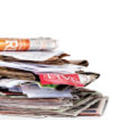 |
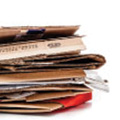 | 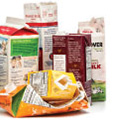 | 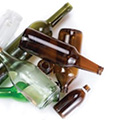 |
Items Not Accepted In Your Recycle Bin
Try to reduce and reuse these items instead of putting them in the trash.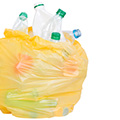 | 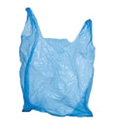 |  |
 | 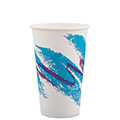 | 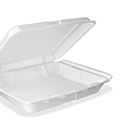 |
Other Materials
Typically not accepted for curbside pickup. Check local programs for disposal options.
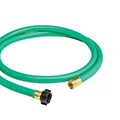 |  |
 | 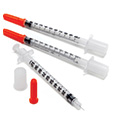 |
Common Recycling Myths
Grow your recycling IQ by debunking common myths that can help ensure your materials aren’t contaminated and successfully make it all the way through the recycling process and to their next life.
Learn the reality behind the myths to ensure you’re protecting others and the environment by recycling right.
Most Americans recycle all they can
Reality: False.
Research shows convenience and commitment are required for maximum recycling. For instance, do you recycle in several rooms of your home? If you only recycle in the kitchen, recyclables in your home office or bathroom get thrown away. So make recycling a collaborative effort where everyone participates, enabling the most recycling of the right materials.
Recycling arrows on a product means that it is definitely recyclable
Reality: Only in some cases. Check the table above and local program guidelines to see what’s recyclable and what’s not.
Many plastics cannot be made into new products. Recycle plastics by shape: bottles, jars, jugs and tubs.
Containers need to be clean in order to be recycled.
Reality: Containers should be clean, but don’t have to be spotless.
While all bottles, cans and containers should be clean, dry and free of most food waste before you place them in your recycling container, they don’t need to be spotless. The goal is to make sure they are clean enough to avoid contaminating other materials, like paper, or your un-lined kitchen recycling bin. Try using a spatula to scrape cans and jars, and putting recyclables in your sink among the dishes you are rinsing to share that same water to rinse and remove residue.
Even if an item shouldn’t go in the bin, it will get sorted anyway
Reality: False. Non-recyclable items are not accepted curbside.
Non-recyclable items contaminate recyclables. Recyclables stuck inside plastic bags are at risk for never making it through the recycling process. Conversely, recyclable items placed into garbage containers are hauled to a landfill and cannot be recovered effectively. The right thing to do is put the right recyclables in the recycling container and non-recyclables into garbage containers. Recyclables with the greatest impact are bottles, cans, paper and cardboard.
Hoses, tanks, shower curtains, swing sets, etc are recyclable.
Reality: Just because it’s plastic doesn’t mean it’s recyclable in your recycling program.
If it’s not bottles, cans, paper or cardboard, it probably doesn’t belong in your curbside mixed recycling bin and may even require special handling. Just because an item is made from plastic, or contains plastic parts, doesn’t mean recycling facilities can handle it. There are other resources (e.g., Earth911.org) that can help answer questions about what to do with non-recyclables or household hazardous waste.